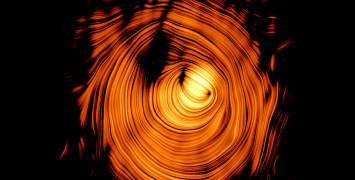Small, but cooperative: the future of spacecraft systems
Will spacecraft follow a similar evolution to computers? While information processing in the last century was performed by large mainframe computers, today, networked smart phones dominate the market. In spacecraft engineering a similar paradigm shift is apparent: from traditional single, large, and multifunctional satellites towards groups of very small satellites that cooperate together. Professor Klaus Schilling, in his ERC project “NetSat”, addresses crucial challenges to enable small satellite formations to self-organise. This offers innovative application perspectives in areas like Earth observation, science exploration or telecommunications.

Modern miniaturization techniques allow the creation of satellites of ever decreasing mass, thus enabling the cost-efficient implementation of distributed multi-satellite systems. The focus of Prof. Schilling's research is the crucial interdisciplinary challenge of formation control of these networks of satellites. His team at the University of Würzburg’s Experimental satellite (UWE) program has been able to produce satellites weighing only 1 kg, focusing on core components for formation flying, like communication, attitude determination and attitude control.
In 2019, “NetSat” will perform a demonstration of the in-orbit formation control of four pico-satellites, for the first time in the world. To achieve this, innovative multi-satellite orbit control - based on relative position and attitude of each satellite – needs to be implemented, in order to enable observations based on multipoint measurements. Related sensor systems used in Prof. Schilling's laboratory for the advanced characterization of teams of mobile robots will be transferred to the space environment.
These breakthroughs are based on a combination of optimal control strategies for coordination of relative motion and a robust flow of information in the network of satellites and ground stations, implemented via communication networks in space. In this way, the distributed formation control and advanced autonomous self-organization capabilities will be demonstrated in orbit.
This research will open the door for future Earth observation missions to generate innovative 3D-images of the Earth surface through simultaneous observations of target areas from different perspectives. Networks based on such distributed satellite system services are also expected to offer significant economic potential in the telecommunication field, for example, in the area of the so-called "internet of things".
Klaus Schilling worked in the space industry on Earth observation and interplanetary satellites (such as HUYGENS to the Saturnian moon Titan and ROSETTA for exploration of comets), before he was appointed professor and chair for Robotics and Telematics at University Würzburg. His team built the first German pico-satellite UWE-1, launched 2005 to optimize Internet in space. He is full member of the International Academy of Astronautics and was Consulting Professor at Stanford University.






